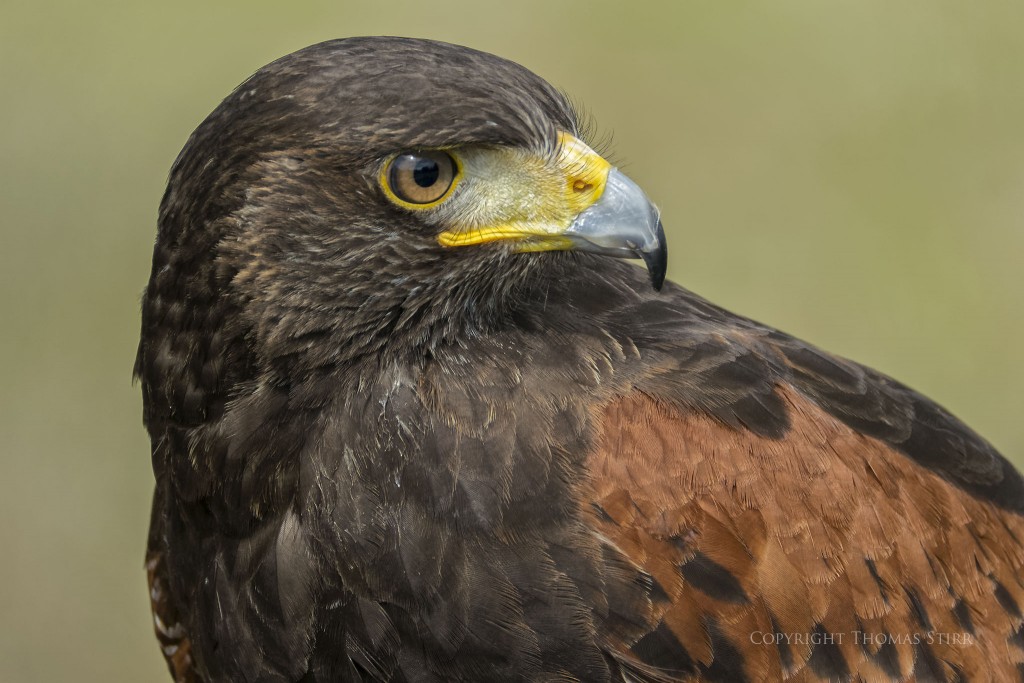During our recent trip to South Carolina my wife and I travelled about an hour and a half south of Myrtle Beach and visited the Centre for Birds of Prey in Awendaw. This is a non-profit facility that houses a good selection of birds of prey and provides various educational programs.
NOTE: Click on images to enlarge.

Pictured above are the buildings that house the owl exhibits. There are 15 display buildings in total, 12 of which are currently displaying various specimens. Almost 60 different species of birds of prey can be viewed.
You’ll notice that there are metal barriers in front of the display buildings. These make it very difficult to get a decent image of the birds on display as it is tricky to shoot past the wire mesh of the enclosures. A few specific species are protected by two layers of mesh to keep wild birds of prey from attacking the captive birds when they venture too close to the first layer of protection.
Guided tours are conducted by very well-informed volunteers. Part of the tour includes a visit to the ‘vulture restaurant’ where visitors can watch a large number of vultures feeding close-by. During our visit the vultures scattered a number of times as a bald eagle swooped in to grab some food. Unfortunately I was poorly positioned in the audience and I was unable to even try to take any images.
After the ‘vulture restaurant’ the guide led the group to an open area where flying demonstrations were held. These featured a number of birds including a vulture, hawk, falcon, kite and an owl. Visitors viewed the flights from wooden gallery seating built into a small earthen rise.

Unlike many other facilities of this type, there is no flying enclosure and the birds at the Center for Birds of Prey are allowed to fly free. This makes it far more difficult to capture images of the birds in flight, especially the fast-moving kites, hawks and falcons. My keeper rate for images of these particular birds doing flying demonstrations was quite low – well under 50%.

The licensed handlers have to watch the skies for wild birds of prey as there have been instances in the past when red-tailed hawks and bald eagles have swooped down to try to attack the captive birds during flying demonstrations.
If you look on the back of the bird in the image above you’ll see a radio tracking device. This is sometimes used to locate birds that don’t immediately fly back to their handlers.

During the flying demonstrations the handlers have wireless microphones and provide interesting commentary on the various bird species, as well as the history of individual birds that are flying during the presentation. Many of the birds were born in captivity and have imprinted on humans.

After each bird’s flying demonstration is completed they are displayed on the wrist of one of the handlers. If you position yourself at the correct angle it is possible to capture quite reasonable images with non-distracting backgrounds as you can see in the samples below.




After the flying demonstrations ended, my wife and I toured the rest of the facility and I did my best to take some images of the captive birds. As noted earlier, the positioning of the barriers around the display buildings makes it difficult to shoot through the wire mesh of the enclosures. I had some luck and a few of the birds were at the right distance away, and I was able to minimize the effect of the wire mesh.






Since we started our visit with the morning tour and flying demonstration, later in the afternoon we were also able to witness some of the birds feeding in their enclosures as you can see in the next couple of images.


Overall, our visit was quite enjoyable and educational. Readers visiting the Myrtle Beach or Charleston areas may find the Center for Birds of Prey a worthwhile facility to visit, especially given the modest cost of a $15 donation per person.
My intent is to keep this photography blog advertising free. If you enjoyed this article and/or my website and would like to make a modest $10 donation through PayPal to support my work it would be most appreciated. You can use the Donate button below. Larger donations can be made to tom@tomstirr.com through PayPal.
Article and all images Copyright Thomas Stirr. All rights reserved. No use, duplication of any kind, or adaptation is allowed without written consent.


Neat Tom! How fun. It’s amazing what close proximity can a good lens and camera can do. Too bad it was too hard to catch with the eagle trolling the vultures or the out-door demo, those would have been spectacular. Interesting they had a great grey owl – those aren’t usually found anywhere near the SE US. Huh. I need to put this place on my South Carolina to-visit list. My son would love them too!
I had a great time in my local zoo’s tropics building with colorful tropical birds that are used to humans getting close. Birding is addictive, even if birds in a box feels a bit like cheating.
Hi Sean,
The Center’s collection of birds of prey includes specimens from North and South America, Africa and Asia.
Tom
Those owls eyes! WOW!
Hi Ian,
Once the owl focused on me it felt like I was under a microscope!
Tom
Wonderful bird photos that befits a pro. Sharp and wonderfully composed photos.
I appreciate your comment Srikanth – thanks!
Tom